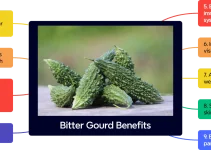While COVID-19 had visible negative impacts on human life at this critical time, it also brings benefits. This article describes five positive externalities of COVID-19.
While the pandemic has made life difficult for many and in general appears to harm everyone, the opposite side of the coin still exists. We call these the pandemic externalities. The externalities I refer to are those things that arose because of the constraints posed by the pandemic on the way people live.
Externalities work both ways, negative and positive. So on the pandemic issue, negative externalities harm people while positive externalities provide benefits.
I look no further but list here five positive externalities of the pandemic that I have experienced while being forced to stay at home to lessen exposure to the virus that changed not only mine but everyone’s lives. I also added those externalities that I have observed, read online, and shared on social media.
Five Positive Externalities of COVID-19
More time spent with the family
Well, time spent with the family is a big plus. The pandemic presents an opportunity to show our love and care to our family. Not only are we physically present to support the family in this time of need, but also we can do some simple chores like cooking sumptuous meals. They have no choice but to eat the food that you cook if you handle the cooking.
Children can also do likewise and return the favor to please their parents. It is only during the pandemic that all in the family is complete.
For those who live alone, however, this could prove to be a challenge. But a social media app like Facebook can keep you connected with people who care. People must have struggled to connect during the 1918 pandemic and even pandemics before that.
Presents opportunities for innovation
The pandemic caused by COVID-19 spurred innovation, with survival at its core. People devised ways on how to avoid hunger. On my part, I undertook the following home-based projects:
Home-based gardening
Right after the pandemic began, I purchased vegetable seedlings and did my gardening on the vacant space in front of the house. Given the small space available, I searched for information online on tips to produce vegetables in that limited, sunlit space. And I did, using lithic mulching, gardening adopted by the folks of Easter Island to survive the harsh environment.
Harvest from the small garden helped reduce my trip to the market. In particular, the pepper plant that randomly grew near the concrete fence along the driveway bore so many fruits. Even the neighbors benefited from it upon seeing the Christmas-like fruits of green and red. They asked my permission to clip some ripe fruits from the stalk. That’s another positive externality.
Home-based fish tank aquaculture
Recently, I noticed that the fish I buy in the market are no longer as fresh as they used to be. Perhaps constraint on mobility has made fish transport difficult.
I longed to eat fresh fish, so I thought I’d convert my concrete vermiculture box into a fish tank. It took me a while to figure out how to waterproof the tank. The first time I poured water on it after using Sahara, an additive to cement to waterproof it, the water just seeped out. It’s not enough.
I made a quick browse online on how to prevent water from escaping concrete tanks. Viewing several videos, I learned that there’s a paint-like substance that I will have to apply on the cement’s outer surface. Super Thoroseal is a cementitious waterproofing intended for use on cement-based surfaces. It does work as it says.
See how it’s applied in the following video.
Now the two species of tilapia (red and black) that the city government gave for free as part of their extension activities keep on growing on a meal of fish grower pellets. A week ago, I started feeding them azolla (Azolla pinnata), a fast-growing duckweed fern that doubles its biomass in about two days.
I’ve read that supplementing the tilapia’s commercial feed with duckweed (Lemna perpusilla) on a 50:50 proportion can help save expenses on their food. But I could not find duckweed, but chanced on a rice farm growing azolla. Hence, although duckweed has more nutritional value than azolla, I settled with the latter because of its availability.
I believe I am doing great rearing the fish after suffering one mortality after a week of keeping them in the tank. Now, on their 43rd day, the remaining 39 fishes of varying sizes appear to be doing fine. They should mature in three months. So I expect them to reproduce naturally.
Although I was alarmed that occasionally they would gasp for air on the surface of the water, regularly cleaning off the tank of their excrements revived them. I suction off wastes that are great for the plants.
This positive externality gave rise to more positive externalities of rearing the fish as follows:
- I learned that waterproofing the tank requires topping the cement’s surface with a cementitious substance that seeps to fill the porous portion of the cement.
- Nutrient-rich fresh water can be a good growing medium for plants.
- I have developed a simple system of removing the fish feces that reduces the need for total water change required in a confined fish-rearing environment.
- I enjoyed viewing the fishes and is a great stress reliever.
Undertaking a productive activity leads to unexpected productive outcomes. Unexpected positive outcomes, in this respect, are positive externalities.
Blended Website Learning Model: An Innovative Teaching System
As face-to-face classes would likely facilitate the spread of COVID-19, online classes became almost the only option for formal education to take place. While learning mode forced unprepared teachers, as well as students, to interact through virtual means.
Mentoring graduate students online proved a bit of a challenge at the early part of the pandemic. Although I have uploaded and used several websites to host the instructional materials I prepared way back in 2012, there is still room to develop an online learning system.
I came up with a system I dubbed “Blended Website Learning System.” That’s because I organized several websites together to overcome the generally poor internet connection in faraway places where some of my students reside. It consists of an instructional material website, a quiz or periodical physical dedicated to assessment of student performance, a web application for synchronous meetings, and social media sites.
Enhances writing skills
I have been a regular blogger since the internet gained popularity. My blogs centered on tips that will help my students understand fully the concepts that I am presenting to them. It was initially a hobby that progressed into something else.
What I mean by something else is that I learned a lot from my blogging activity. I started writing in popular writing sites like Triond, Factoids, Wikinut, Blogger, Ezinearticles, among others. I even wrote in LiveJournal and similar sites. Some pay a little for lots of effort you make to compose an article.

However, through time, those sites shifted ownership, changed themes, or just ceased to exist for some reason. I got a little bit frustrated because I could not continue with my blogging activity and earn enough to pay for the internet connection.
I decided to study how websites work and started from scratch. I built my websites, plural that is, as I started with free sites like Weebly and Webnode with its simple tools. But as I become more adept with it, I saw the need to go further and learn a much more flexible Content Management System where you can tweak themes and page organization, SEO, among others. I settled with WordPress and built this website where I currently blog now.
At this point, this blog has become an indispensable part of my online activity during the pandemic. It provides financial support to all my online activities particularly as home to the educational articles I wrote for my students. Other students from across the globe benefit from it. The benefits they gain are another externality of my writing activity online.
The pleasure I gain in writing benefited not only me but also those who happen to read my work. Writing is something I cannot give up until I leave this world.
Opened Opportunity for online investments
Looking for ways to augment the income to cope with emergencies due to the pandemic, I chanced upon an app that allows me to save and invest online. Doing business or productive activities that require face-to-face interaction would be risky.
Hence, online investments present an opportunity to earn passively. That is if you know what you are doing.
Leaving your hard-earned money in the bank depreciates its value. Putting it in online investment accounts minimizes your loss. There are risks involved in investing online, but higher is your risk if you leave your funds by just saving them in a minuscule earning savings deposit.
Develops a caring attitude towards others through information sharing
During the pandemic, a certain level of unity was achieved among individuals to fight a common foe. Unity in purpose is a positive externality as new information obtained through active sharing in social media sites benefits everyone.
Whenever people learn tips on countering the risks associated with COVID-19, they share this information with friends, family, and colleagues. Timely information is crucial in surviving the pandemic.
We need to be more discerning, however, on the authenticity of such information. In reality, it is difficult to discern fact from fiction. The so-called misinformation phenomenon became known as the infodemic.
In summary, the pandemic presented opportunities for improving the social and economic lives of people.
The five externalities identified in this article include:
1) more time spent with the family,
2) the pandemic presents opportunities for innovation,
3) enhances online writing skills,
4) opens opportunity for online investment,
and 5) develops a caring attitude.
If we view the world positively despite its challenges, life becomes better lived. Keep safe and enjoy your home-based activities.
© P. A. Regoniel 30 September 2021
[cite]


